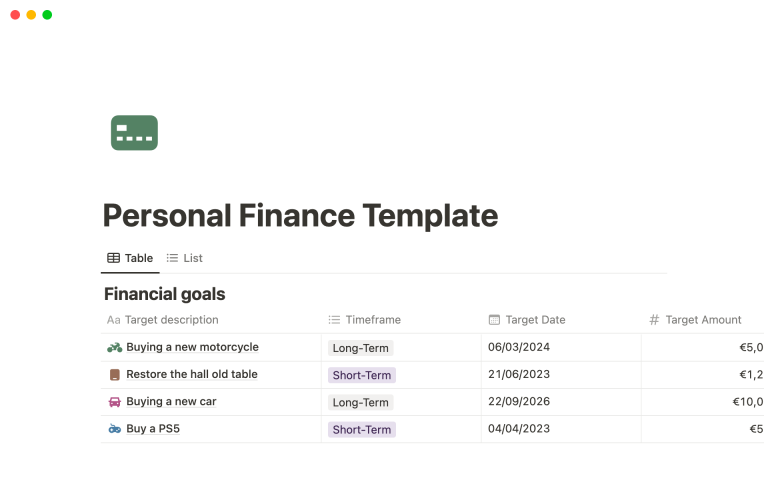In today’s fast-paced world, the pursuit of financial independence has never been more vital. Many individuals dream of breaking free from the conventional work cycle to achieve a life filled with choices and opportunities. The journey to financial freedom doesn’t have to be overwhelming; instead, it can be an exciting adventure filled with learning and growth. Here, we present a clear pathway toward establishing a solid financial independence plan, providing the tools and knowledge necessary to navigate your way to a more empowered financial future.
Understanding the Foundations of Your Financial Independence Plan
Before diving into the specifics, it’s crucial to understand what financial independence really means. At its core, financial independence refers to the ability to support oneself without relying on employment income. This status is achieved when your assets generate enough income to cover your living expenses. To establish a solid financial independence plan, you need to assess your current financial situation, including income, expenses, assets, and liabilities.
Assessing Your Current Financial Status
The first step in your financial independence plan is a comprehensive assessment of your financial status. Take time to analyze your income sources, whether they be from a job, investments, or businesses. Next, list out your monthly expenses, which should include fixed expenses like rent or mortgage, utilities, food, transportation, and discretionary spending. Understanding the full picture will allow you to identify areas where you can make adjustments.
Set Clear and Achievable Goals
Once you have assessed your current financial situation, the next phase involves setting clear and achievable goals. Think about what financial independence means to you personally. Is it being debt-free? Or is it having enough passive income to travel the world? Setting specific and measurable goals will enhance your focus and direction as you work through your financial independence plan.
Your Pathway to Building Wealth
Now that you have a firm grasp of your financial situation and your goals, it’s time to develop a strategy for building wealth. This will typically involve cutting expenses, increasing income, and investing wisely. Consider the various avenues available for generating additional income, such as part-time work, freelance opportunities, or starting a side business. Alongside increasing your income, you can implement a robust savings plan.
Effective Budgeting Techniques
A crucial component of any financial independence plan is effective budgeting. Budgeting isn’t about restricting your spending; rather, it’s about allocating your resources in a way that allows for both savings and enjoyment. There are numerous budgeting methods available, such as the 50/30/20 rule, which suggests allocating 50% of your income to necessities, 30% to wants, and 20% to savings.
The Power of Saving and Investing
While budgeting helps manage your income and expenses, saving and investing are fundamental to achieving financial independence. Aim to save a portion of your income each month, no matter how small. Consider opening a high-yield savings account to earn interest on your savings. More importantly, as you build a savings cushion, start to invest. Investments can include stocks, bonds, mutual funds, and real estate. The earlier you start investing, the more compound interest will enhance your wealth over time.
Creating and Diversifying Your Investment Portfolio
In your financial independence plan, creating a diversified investment portfolio is key. Diversification minimizes risk and maximizes potential gains. Diversifying means spreading your investments across a variety of asset classes, including stocks, bonds, and real estate. Consult with a financial advisor to identify what asset allocation strategy suits your financial goals and risk tolerance. Maintaining an investment portfolio aligned with your financial goals is essential for achieving long-term financial success.
Long-term Financial Strategies
As you develop your financial independence plan, consider adopting long-term strategies that can sustain your wealth. These strategies include continuing education about investment opportunities, seeking out passive income sources, and making informed tax decisions. Understanding tax implications on investments and income will allow you to keep more of your earnings.
Educating Yourself for Financial Empowerment
Knowledge is power, especially when it comes to financial independence. Commit time to educate yourself on personal finance. There are numerous books, podcasts, and online resources dedicated to financial literacy. Engaging with communities focused on personal finance can also provide insights and encouragement. Take advantage of free courses available through local libraries or community centers to increase your financial knowledge.
Establishing an Emergency Fund
Before you fully commit to a more complex financial independence plan, it’s crucial to build an emergency fund. This fund should ideally cover three to six months’ worth of living expenses. An emergency fund acts as a safety net, allowing you to respond to unplanned financial challenges without derailing your progress toward independence. Look for a high-interest savings account to keep your emergency fund accessible yet growing.
Staying Motivated and Committed
Walking the path towards financial independence can be a lengthy journey; thus, motivation is essential. Regularly revisit your goals and remain flexible in your approach. As life changes, so may your financial goals and strategies. Celebrate small wins along the way, as each step brings you closer to your ultimate financial independence plan.
Visual Representation of Your Financial Independence Plan

This visual representation serves as an insightful guide to remind you of the essential elements of your financial independence plan. Keeping it in view can encourage you to stay on track.
Networking and Building Support Systems
Success in achieving financial independence often hinges on the support of like-minded individuals. Network with others who share similar goals, whether through online forums or local meetups. Building relationships where you can share tips, strategies, and motivations can provide valuable support. Remember, you are not alone in this journey.
Reassessing Your Financial Independence Plan Regularly
Your financial independence plan is not static; it requires regular reassessment. Life circumstances, market conditions, and your personal goals will change over time. Keep a schedule to check in on your progress and make necessary adjustments. This approach will help ensure you stay on the path to financial freedom.
Final Thoughts on Your Journey to Financial Independence
Achieving financial independence is a noble goal that requires dedication, strategy, and continuous education. By following a well-structured financial independence plan, you can transform your aspirations into reality. Begin today by assessing your finances and setting goals. With each step you take towards financial independence, you will find yourself closer to a more empowered and liberated future.


